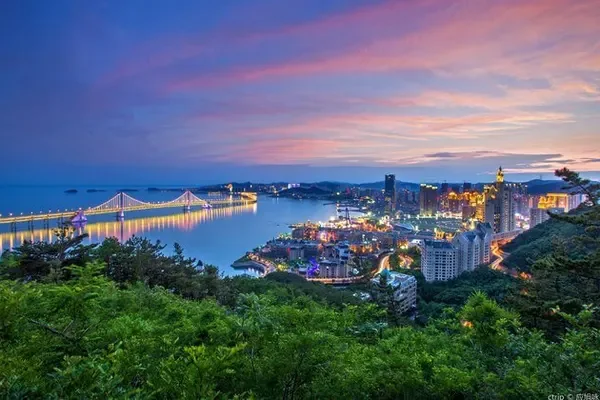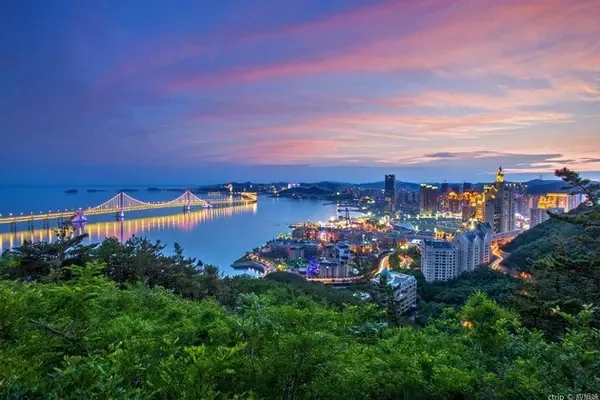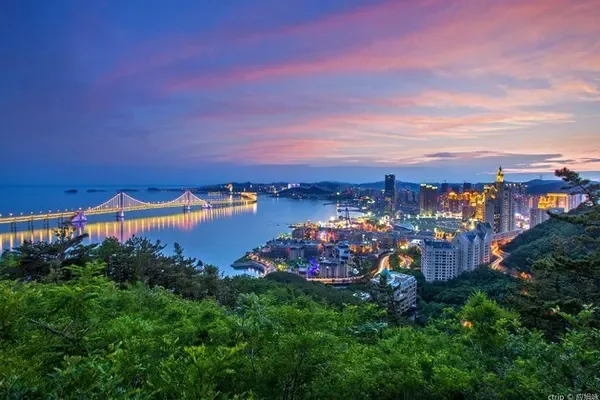★Tourist location: Tianxing Bridge in Huangguoshu, Anshun, Guizhou
The wide river channel reaches the downstream, forming a wide waterfall. What it lacks in height, it more than makes up for in width. It is not high, but it is more than ten meters long. The raised stone bags on the surface of the pool are like lotus leaves, which are interlaced and connected. The river water spreads evenly on each "leaf surface". The ground flow is like thousands of silver chains, so it is called "Silver Chain Falling Pool", and the waterfall is also called Silver Chain Falling Waterfall. The Tianxing Bridge Scenic Spot is not famous for the Tianxing Cave. People are willing to walk the rest of the way, and most of them come for it.
Standing by the pool, the sound of the waterfall is rumbling and majestic. But because there is a big waterfall in front of it, the silver chain pendant waterfall looks more delicate, so it is called the most beautiful waterfall in the Huangguoshu waterfall group. For us from Jiangnan, this waterfall is also very magnificent.
Falling below is Pearl Spring. The origin of this name is because the water rolls on the stone surface into pearls. But the spring is actually inconspicuous, and we were all taken away by the waterfall.
Going forward, the current is much smoother. After that grand splash, now they flow peacefully. Coupled with the fact that there are few tourists here, it seems very quiet.
Walking to Feipu Bridge, the water under the bridge flowed again. It is said that during the flood season, its momentum is also amazing. I thought this time there would be more water than in early spring, but unfortunately the road next to it was blocked, and it seemed that the momentum was not too great.
Going further downstream, the river began to become wider and flatter again. The gurgling sound of the water, the verdant greenery, came to an end before you knew it.
There is Huangguoshu Folk Museum on the side of the road, which can be visited for free. Except for tourists like us who have more time and budget, ordinary tourists hardly step into the museum.
Without looking at the introduction, we really don’t know that the Miao nationality actually originated from the Yellow River civilization. Their history can be traced back to the time of the legendary Yellow Emperor Yandi Chiyou, who was the ancestor of the Miao nationality. Later, the Miao people migrated from the middle and lower reaches of the Yellow River to today's Guizhou, Sichuan, Yunnan, Guangxi and Southeast Asia. Under the underdeveloped transportation conditions in ancient times, this migration route was indeed long enough.
Anshun is known as "the first dyeing in the East", and Puding Hepingba's Miao batik is the best among them, and the oldest is the black stone-shaped Miao wax.
The jewelry of the Miao nationality is displayed in the showcase, such as silver hats, silver collars, etc., which look heavy and may not be worn for a long time. Maybe they will be worn when wearing costumes during festivals.
The Buyi people are the descendants of the ancient Baiyue people, and their population is much smaller than that of the Miao people, but they have their own national language, and they have the famous eight-tone seat singing, twelve bronze drums and double flute pipes in music. Their textiles are also famous, such as bucket pattern cloth and plaid sheets, which are very popular among tourists.
"Tunpu Folklore Area" introduces the Tunpu in Anshun, which originated from Zhu Yuanzhang's north-south campaign in the early Ming Dynasty. The Tianlong Tunpu and Yunfeng Tunpu in Anshun are well preserved.
To say that the silver jewelry made by ethnic minorities is really exquisite. The Han people have been advocating gold for many years, and the craftsmanship of silver jewelry products is relatively rough. Gold is rarely seen in these ethnic ornaments, but silver ornaments are the main ones, which are extremely exquisite.
When we got here, it was already past meal time. Fortunately, we had foreseen and brought some dry food to satisfy our hunger. When we got here, we finally saw the restaurant. I thought that the price of restaurants in the scenic spot would be very expensive, but the price is actually very close to the people. A serving of spicy chicken powder is 15 yuan, and Guailu rice is 20 yuan. Although the portion is not too much, it is already very satisfying. When I went out, I met a local resident selling corn, and I brought two pillars with me, which was cheaper than the one sold at the station.
At the exit is the Mawei Waterfall that we saw as soon as we entered the scenic spot. It gushes out from the middle of the rock and falls into the pool under the rock. It looks like a horse's tail from the side. There is a banana tree next to it. I don’t know when it was planted. The water droplets splashed on the banana leaves. You can hear the sound of rain hitting the banana leaves without rain, and the sound of the blow is really loud.
When I left the scenic spot, I was still waiting for the bus at the original place. The word "Tianxing Bridge" on the opposite rock wall was very big and very imposing. I thought that if there were not many first titles in front of the name of Huangguoshu Waterfall, the scenic spot would still be Tianxing Bridge. It can better show the karst landforms in the Southwest China.





















































































